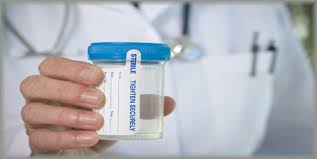Rehab Articles

Heroin addiction has reached epidemic rates in the USA and Canada, and there are many challenges when it comes to substance abuse treatment for this problem. There are many different types of programs and facilities, each with specific treatment methods and techniques offered. Insurance coverage and the cost of treatment also play a role in the decisions made. Many insurance companies in the USA will not pay for inpatient care for heroin addiction, although these same insurers will often pay for medical detox and inpatient treatment for alcoholism. The reasoning from many insurers is that heroin addiction is not a medical emergency that can lead to death. Try telling that to someone whose child is at a risk for overdose and death. Every time heroin is used there is a risk of death, and emergency rooms across North America see these cases every day.
Heroin addiction is an insidious problem, and substance abuse treatment is needed but many people can not get help when they seek it at a community program or local facility because of long waiting lists or being unable to afford the cost of an effective inpatient program and treatment regimen. The most effective programs will involve individual counseling, a soothing and peaceful environment, and a wide range of treatment methods and options to choose from. If you or someone you love struggle with a heroin addiction then treatment is critical, continued use of this drug often leads to an early death from an overdose or other medical complications related to heroin use.
Rehab Articles

A new study performed by researchers at prestigious Duke University has identified two brain profiles which are distinct, and one indicates the risk for problem drinking while the other identifies risk for risky sexual behaviors. According to the researchers the scans taken of the study participants showed that brain region functions which were usually complimentary were imbalanced for individuals who had a higher chance of engaging in risky sexual behaviors or problem drinking when the were under stress. The study results could help clinicians accurately predict the risk for these behaviors in young adults in the future although this is not possible yet. The Duke Neurogenetics Study or DNS is an ongoing study which was started in 2010 so that researchers could learn and understand about how brain, environment, and genetic interactions form risky behaviors and predict mental disorders.
The senior study author, for both DNS and the latest study as part of the ongoing process that identified the two distinct brain profiles for problem drinking and risky sexual practices and behaviors, was Duke University psychology and neuroscience professor Ahmad Hariri, Ph.D. According to Dr. Hariri “By knowing the biology that predicts risk, we hope to eventually change the biology or at least meet that biology with other forces to stem the risk. We now have these two distinct profiles of risk that, in general, reflect imbalance in the function of typically complementary brain areas. If you have high activity in both areas, no problem. If you have low activity in both areas, no problem. It’s when they’re out of whack that individuals may have problems with drinking.”
Rehab Articles

A new study shows that addiction to prescription pain medication is something that a lot of primary care physicians do not understand, even though these same physicians are the top prescribers of these drugs in many areas. The survey showed that a significant number of PCPs do not have a basic understanding of how opioid abuse occurs or about the addiction potential that this class of drugs can have. According to the leader of the study, Johns Hopkins Bloomberg School’s Department of Epidemiology associate professor and Center for Drug Safety and Effectiveness co-director Caleb Alexander, M.D., M.S., “Physicians and patients may mistakenly view these medicines as safe in one form and dangerous in another, but these products are addictive no matter how you take them. If doctors and patients fail to understand this, they may believe opioids are safer than is actually the case and prescribe them more readily than they should.”
The latest prescription pain medication study shows the continuing efforts to understand, identify, and treat opioid addiction in the communities across America. Opiod abuse and addiction has been on the rise, and so has the amount of these drugs on the street. Dr. Alexander continued by saying “Doctors continue to overestimate the effectiveness of prescription pain medications and underestimate their risks, and that’s why we are facing such a public health crisis. Opioids serve an important role in the treatment of some patients. However, our findings highlight the importance of patient and provider education regarding what abuse-deterrent products can and cannot do. When it comes to the opioid epidemic, we must be cautious about overreliance on technological fixes for what is first and foremost a problem of overprescribing.” Alexander also stated “Despite the high levels of support, there are many barriers to implementation and there may be reluctance to translate these changes into real-world practice. But for the sake of making a dent in an epidemic of injuries and deaths, we have to find ways to make changes. Too many lives are at stake to stick with the status quo.”
Rehab Articles

Illegal drug use on he job has increased significantly in the USA, and this is indicated by the higher number of positive results being identified by employment drug screening. The data that was used to reach this conclusion includes data from millions of workplace drug screening results, and it shows that the use of illegal drugs by employes has increased by about 5% for the second year in a row. The drugs identified by the screening include marijuana, methamphetamine, and cocaine. Designer drugs and synthetic substances may not be detected by most workplace drug screenings though, and this means that the increase in illicit drug use could actually be even higher.
According to Quest Diagnostics science and technology director Dr. Barry Sample “American workers are increasingly testing positive for workforce drug use across almost all workforce categories and drug test specimen types. In the past, we have noted increases in prescription drug positivity rates, but now it seems illicit drug use may be on the rise, according to our data.” Quest Diagnostics released data that showed roughly 4.7% of the screenings had a positive result, and the data included approximately 6.6 million employment drug screening results. In 2013 this percentage was only 4.3%. US National Institute on Drug Abuse former director Dr. Robert DuPont commented that “The increases in illicit drug positivity in employment drug testing should get employers and policymakers to take notice of the serious risks these drugs create for productivity, health and safety.” According to Dr. Sample he questions whether increased marijuana detection “means that people are more accepting and therefore more likely to use marijuana in a recreational way or for therapeutic purposes than in the past, even in states where marijuana’s use is not clearly sanctioned by state laws. This will be an important area of continued analysis given the national debate about the legality and health impacts of recreational and medicinal marijuana use.”



